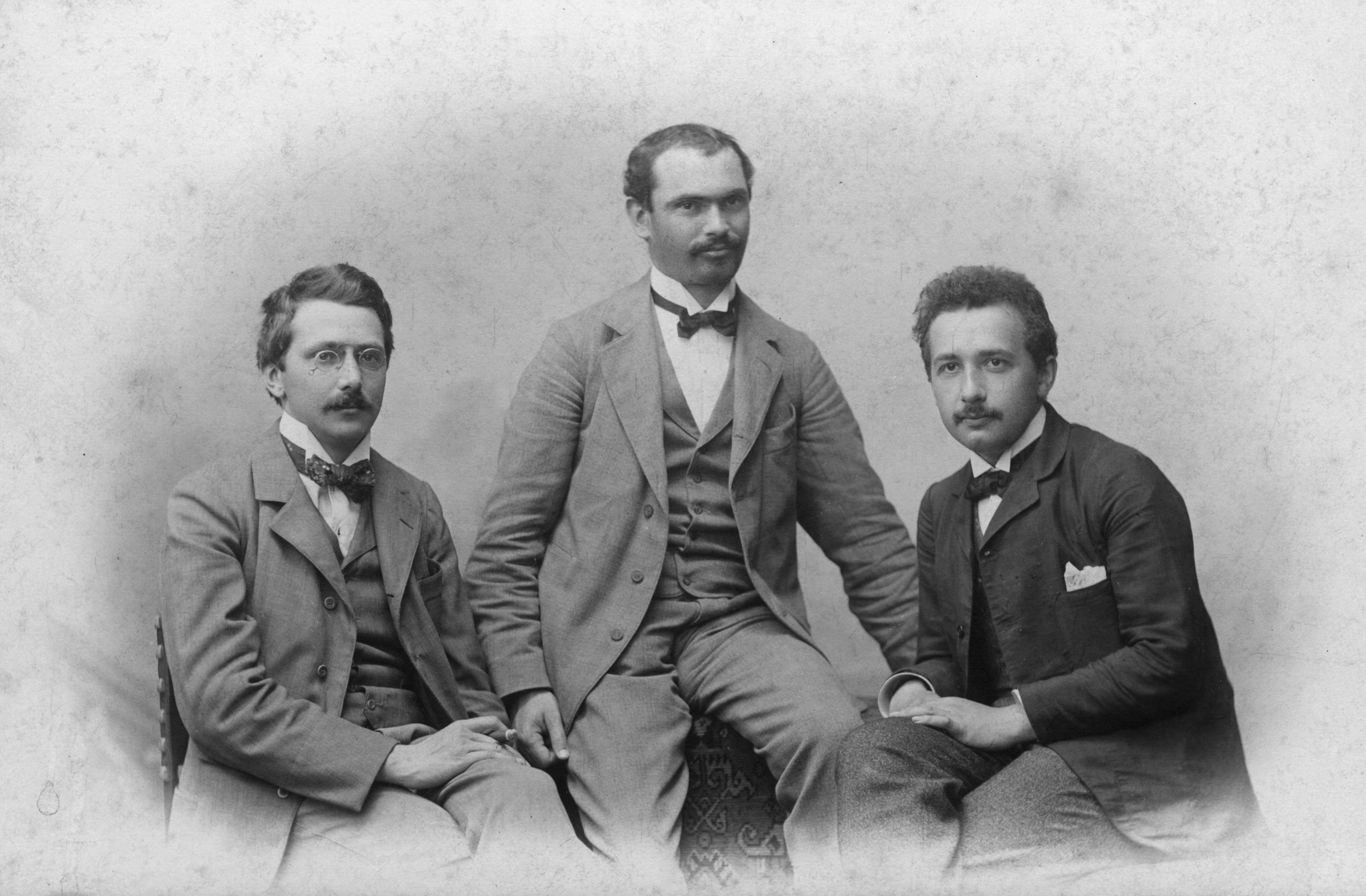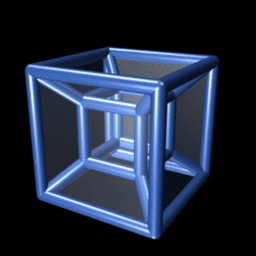|
The Grammar Of Science
''The Grammar of Science'' is a book by Karl Pearson first published in hardback in 1892. In 1900, the second edition, published by Adam & Charles Black, appeared. The third, revised, edition was also published by Adam & Charles Black in 1911. It was recommended by Einstein to his friends of the Olympia Academy. Several themes were covered in this book that later became part of the theories of Einstein and other scientists, such as: * the relativity of motion to a frame of reference (fixed stars), * the equivalence of "matter" and energy, * physics as geometry, * the non-existence of the ether, * the importance of creative imagination rather than mere fact-gathering, * antimatter, * fourth dimension, * wrinkles in space, * molecular relative position and motion, and * motion of corpuscles as relative motion in a field. Chapter I ''"Introductory – The Scope and Method of Science"'' # The scope of science is to ascertain truth in every possible branch of knowledge. There is n ... [...More Info...] [...Related Items...] OR: [Wikipedia] [Google] [Baidu] |
Karl Pearson
Karl Pearson (; born Carl Pearson; 27 March 1857 – 27 April 1936) was an English biostatistician and mathematician. He has been credited with establishing the discipline of mathematical statistics. He founded the world's first university statistics department at University College London in 1911, and contributed significantly to the field of biometrics and meteorology. Pearson was also a proponent of Social Darwinism and eugenics, and his thought is an example of what is today described as scientific racism. Pearson was a protégé and biographer of Sir Francis Galton. He edited and completed both William Kingdon Clifford's ''Common Sense of the Exact Sciences'' (1885) and Isaac Todhunter's ''History of the Theory of Elasticity'', Vol. 1 (1886–1893) and Vol. 2 (1893), following their deaths. Early life and education Pearson was born in Islington, London, into a Quaker family. His father was William Pearson QC of the Inner Temple, and his mother Fanny (née Smit ... [...More Info...] [...Related Items...] OR: [Wikipedia] [Google] [Baidu] |
Albert Einstein
Albert Einstein (14 March 187918 April 1955) was a German-born theoretical physicist who is best known for developing the theory of relativity. Einstein also made important contributions to quantum mechanics. His mass–energy equivalence formula , which arises from special relativity, has been called "the world's most famous equation". He received the 1921 Nobel Prize in Physics for . Born in the German Empire, Einstein moved to Switzerland in 1895, forsaking his German citizenship (as a subject of the Kingdom of Württemberg) the following year. In 1897, at the age of seventeen, he enrolled in the mathematics and physics teaching diploma program at the Swiss ETH Zurich, federal polytechnic school in Zurich, graduating in 1900. He acquired Swiss citizenship a year later, which he kept for the rest of his life, and afterwards secured a permanent position at the Swiss Patent Office in Bern. In 1905, he submitted a successful PhD dissertation to the University of Zurich. In 19 ... [...More Info...] [...Related Items...] OR: [Wikipedia] [Google] [Baidu] |
Olympia Academy
The Olympia Academy (German: ''Akademie Olympia'') was a group of friends in Bern, Switzerland, who met – usually at Albert Einstein's apartment – to discuss philosophy and physics. Overview The group was founded in 1902 by Einstein, Conrad Habicht, and Maurice Solovine, and played a significant role in Einstein's intellectual development. Before his " miracle year" (1905), when Einstein was a patent clerk in Bern, the group of friends met to debate books in the fields of physics and philosophy. The group's origin lay in Einstein's need to offer private lessons in mathematics and physics in order to make a living (in 1901, before he took up his post at the patent office in Bern). Solovine, a Romanian philosophy student, answered Einstein's newspaper advertisement. In fact neither the tutorials nor any payment materialised; instead, the two began to meet regularly to discuss their shared interest in physics and philosophy. They were soon joined by the mathematician ... [...More Info...] [...Related Items...] OR: [Wikipedia] [Google] [Baidu] |
Galilean Relativity
Galilean invariance or Galilean relativity states that the laws of motion are the same in all inertial frames of reference. Galileo Galilei first described this principle in 1632 in his ''Dialogue Concerning the Two Chief World Systems'' using the example of a ship travelling at constant velocity, without rocking, on a smooth sea; any observer below the deck would not be able to tell whether the ship was moving or stationary. Formulation Specifically, the term ''Galilean invariance'' today usually refers to this principle as applied to Newtonian mechanics, that is, Newton's laws of motion hold in all frames related to one another by a Galilean transformation. In other words, all frames related to one another by such a transformation are inertial (meaning, Newton's equation of motion is valid in these frames). In this context it is sometimes called ''Newtonian relativity''. Among the axioms from Newton's theory are: #There exists an '' absolute space'', in which Newton's laws ar ... [...More Info...] [...Related Items...] OR: [Wikipedia] [Google] [Baidu] |
Motion (physics)
In physics, motion is when an object changes its position with respect to a reference point in a given time. Motion is mathematically described in terms of displacement, distance, velocity, acceleration, speed, and frame of reference to an observer, measuring the change in position of the body relative to that frame with a change in time. The branch of physics describing the motion of objects without reference to their cause is called ''kinematics'', while the branch studying forces and their effect on motion is called '' dynamics''. If an object is not in motion relative to a given frame of reference, it is said to be ''at rest'', ''motionless'', ''immobile'', '' stationary'', or to have a constant or time-invariant position with reference to its surroundings. Modern physics holds that, as there is no absolute frame of reference, Isaac Newton's concept of '' absolute motion'' cannot be determined. Everything in the universe can be considered to be in motion. Motion applies to ... [...More Info...] [...Related Items...] OR: [Wikipedia] [Google] [Baidu] |
Matter
In classical physics and general chemistry, matter is any substance that has mass and takes up space by having volume. All everyday objects that can be touched are ultimately composed of atoms, which are made up of interacting subatomic particles. In everyday as well as scientific usage, ''matter'' generally includes atoms and anything made up of them, and any particles (or combination of particles) that act as if they have both rest mass and volume. However it does not include massless particles such as photons, or other energy phenomena or waves such as light or heat. Matter exists in various states (also known as phases). These include classical everyday phases such as solid, liquid, and gas – for example water exists as ice, liquid water, and gaseous steam – but other states are possible, including plasma, Bose–Einstein condensates, fermionic condensates, and quark–gluon plasma. Usually atoms can be imagined as a nucleus of protons and neu ... [...More Info...] [...Related Items...] OR: [Wikipedia] [Google] [Baidu] |
Energy
Energy () is the physical quantity, quantitative physical property, property that is transferred to a physical body, body or to a physical system, recognizable in the performance of Work (thermodynamics), work and in the form of heat and light. Energy is a Conservation law, conserved quantity—the law of conservation of energy states that energy can be Energy transformation, converted in form, but not created or destroyed. The unit of measurement for energy in the International System of Units (SI) is the joule (J). Forms of energy include the kinetic energy of a moving object, the potential energy stored by an object (for instance due to its position in a Classical field theory, field), the elastic energy stored in a solid object, chemical energy associated with chemical reactions, the radiant energy carried by electromagnetic radiation, the internal energy contained within a thermodynamic system, and rest energy associated with an object's rest mass. These are not mutual ... [...More Info...] [...Related Items...] OR: [Wikipedia] [Google] [Baidu] |
Physics
Physics is the scientific study of matter, its Elementary particle, fundamental constituents, its motion and behavior through space and time, and the related entities of energy and force. "Physical science is that department of knowledge which relates to the order of nature, or, in other words, to the regular succession of events." It is one of the most fundamental scientific disciplines. "Physics is one of the most fundamental of the sciences. Scientists of all disciplines use the ideas of physics, including chemists who study the structure of molecules, paleontologists who try to reconstruct how dinosaurs walked, and climatologists who study how human activities affect the atmosphere and oceans. Physics is also the foundation of all engineering and technology. No engineer could design a flat-screen TV, an interplanetary spacecraft, or even a better mousetrap without first understanding the basic laws of physics. (...) You will come to see physics as a towering achievement of ... [...More Info...] [...Related Items...] OR: [Wikipedia] [Google] [Baidu] |
Geometry
Geometry (; ) is a branch of mathematics concerned with properties of space such as the distance, shape, size, and relative position of figures. Geometry is, along with arithmetic, one of the oldest branches of mathematics. A mathematician who works in the field of geometry is called a ''List of geometers, geometer''. Until the 19th century, geometry was almost exclusively devoted to Euclidean geometry, which includes the notions of point (geometry), point, line (geometry), line, plane (geometry), plane, distance, angle, surface (mathematics), surface, and curve, as fundamental concepts. Originally developed to model the physical world, geometry has applications in almost all sciences, and also in art, architecture, and other activities that are related to graphics. Geometry also has applications in areas of mathematics that are apparently unrelated. For example, methods of algebraic geometry are fundamental in Wiles's proof of Fermat's Last Theorem, Wiles's proof of Fermat's ... [...More Info...] [...Related Items...] OR: [Wikipedia] [Google] [Baidu] |
Aether (classical Element)
According to ancient and History of science in the Middle Ages, medieval science, aether (, alternative spellings include ''æther'', ''aither'', and ''ether''), also known as the fifth element or quintessence, is the material that fills the region of the universe beyond the Sublunary sphere, terrestrial sphere. The concept of aether was used in several theories to explain several natural phenomena, such as the propagation of light and gravity. In the late 19th century, physicists postulated that aether permeated space, providing a medium through which light could travel in a vacuum, but evidence for the presence of such a medium was not found in the Michelson–Morley experiment, and this result has been interpreted to mean that no luminiferous aether exists. Mythological origins The word (''aithḗr'') in Homeric Greek means "pure, fresh air" or "clear sky". In Greek mythology, it was thought to be the pure essence that the gods breathed, filling the space where they lived, an ... [...More Info...] [...Related Items...] OR: [Wikipedia] [Google] [Baidu] |
Antimatter
In modern physics, antimatter is defined as matter composed of the antiparticles (or "partners") of the corresponding subatomic particle, particles in "ordinary" matter, and can be thought of as matter with reversed charge and parity, or going backward in time (see CPT symmetry). Antimatter occurs in natural processes like cosmic ray collisions and some types of radioactive decay, but only a tiny fraction of these have successfully been bound together in experiments to form antiatoms. Minuscule numbers of antiparticles can be generated at particle accelerators, but total artificial production has been only a few nanograms. No Macroscopic scale, macroscopic amount of antimatter has ever been assembled due to the extreme cost and difficulty of production and handling. Nonetheless, antimatter is an essential component of widely available applications related to beta decay, such as positron emission tomography, radiation therapy, and industrial imaging. In theory, a particle and ... [...More Info...] [...Related Items...] OR: [Wikipedia] [Google] [Baidu] |
Four-dimensional Space
Four-dimensional space (4D) is the mathematical extension of the concept of three-dimensional space (3D). Three-dimensional space is the simplest possible abstraction of the observation that one needs only three numbers, called ''dimensions'', to describe the sizes or locations of objects in the everyday world. This concept of ordinary space is called Euclidean space because it corresponds to EuclidEuclidean geometry, 's geometry, which was originally abstracted from the spatial experiences of everyday life. Single locations in Euclidean 4D space can be given as Vector space, vectors or ''n-tuples, 4-tuples'', i.e., as ordered lists of numbers such as . For example, the volume of a rectangular box is found by measuring and multiplying its length, width, and height (often labeled , , and ). It is only when such locations are linked together into more complicated shapes that the full richness and geometric complexity of 4D spaces emerge. A hint of that complexity can be seen in ... [...More Info...] [...Related Items...] OR: [Wikipedia] [Google] [Baidu] |










